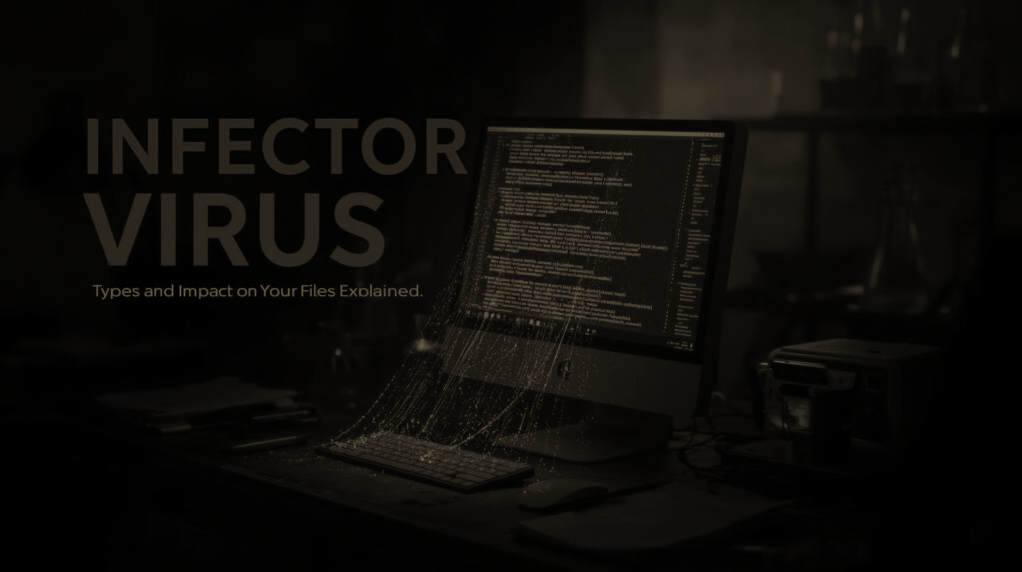In the ever-evolving world of cybersecurity, threats take many forms, and one of the most notorious among them is the infector virus. Unlike simpler malware, an infector virus is designed to attach itself to executable files or programs, spreading silently while causing significant damage to systems. To protect personal data, business networks, and organizational infrastructure, it is vital to understand how an infector virus works, its risks, and the strategies available for prevention.
Also, explore Forge Adventurer 5M Software: A Complete Guide to Innovation and Utility
What is an infector virus?
An infector virus is a type of malicious program that attaches itself to legitimate software files. When a user executes the infected file, the virus activates, replicates, and spreads to other programs or devices. These viruses often target .exe files, system utilities, and application software, making them dangerous for both individuals and businesses.
Infector viruses are classified into three main categories:
- File infector viruses, which attach to executable files.
- Boot sector viruses, which infect the startup section of storage drives.
- Macro viruses, which exploit applications like Microsoft Word or Excel through infected documents.
How does an infector virus spread?
The spread of an infector virus often happens through everyday user activities. Common methods include downloading files from untrusted sources, opening email attachments, or using infected USB drives. In networked environments, these viruses can quickly propagate across multiple systems, making containment difficult.
Some notorious examples include the CIH virus (Chernobyl) and Sality, which caused massive disruptions by corrupting files and disabling essential functions.
The impact of an infector virus
The consequences of an infector virus can be severe, ranging from minor inconveniences to catastrophic system failures. Some key impacts include:
- Data corruption and loss of important files.
- Performance degradation due to resource-heavy replication.
- Unauthorized access enabling hackers to exploit systems.
- Financial losses for organizations caused by downtime and recovery.
- Privacy breaches through theft of personal or corporate data.
These risks underline the importance of robust cybersecurity measures in today’s digital landscape.
Preventing and combating an infector virus
Protecting against an infector virus requires a combination of awareness, tools, and proactive measures. Some effective strategies include:
- Installing and regularly updating antivirus software.
- Keeping operating systems and applications patched with security updates.
- Avoiding downloads from unverified websites and sources.
- Using firewalls and intrusion detection systems to monitor suspicious activity.
- Backing up data regularly to minimize loss in case of infection.
If a system is already infected, cybersecurity experts recommend isolating the affected device, running a thorough antivirus scan, and in severe cases, reformatting and reinstalling the operating system.
FAQs
1. What is an infector virus in simple terms?
An infector virus is a type of malware that attaches itself to legitimate software files and spreads when those files are executed.
2. How can I tell if my computer has an infector-virus?
Signs include slow performance, corrupted files, frequent crashes, and unusual system behavior. Antivirus scans can confirm infection.
3. Can infector-viruses steal my data?
Yes, some advanced infector-viruses are designed to enable data theft or provide backdoor access for hackers.
4. What is the difference between an infector-virus and a worm?
While an infector-virus attaches to files and needs execution to spread, a worm spreads independently without requiring user action.
5. How do I protect my system from an infector-virus?
Use updated antivirus software, avoid suspicious downloads, apply security patches, and regularly back up your important files.
Conclusion
The infector-virus remains one of the most persistent and destructive forms of malware in the cybersecurity landscape. By understanding its behavior, risks, and methods of prevention, individuals and organizations can significantly reduce the chances of infection. With the right mix of antivirus protection, safe browsing habits, and security updates, the threat of an infector-virus can be managed effectively. In an age where digital threats are growing in sophistication, proactive defense is the best way to ensure the safety of valuable data and systems.
